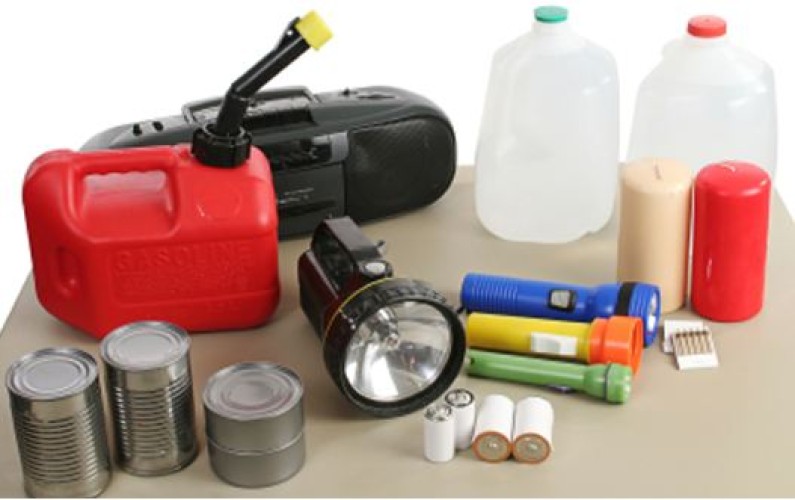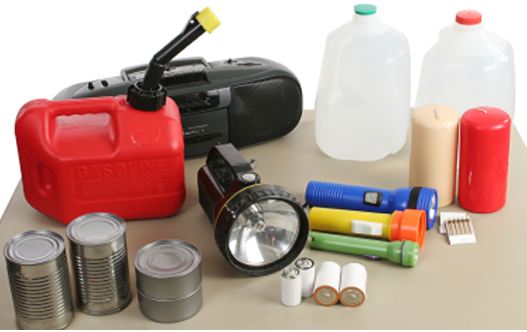

Life isn’t always easy but we learn pretty quickly how to deal with the everyday routines, such as hitting the snooze button no more than three times so we can do what is needed to get to work on time, the precise ratio of peanut butter to jelly so junior doesn’t have a meltdown at school, and which bills to send out first so our direct deposit hits the account before the bigger bills take their toll. These are behaviors that are ingrained in us over time to handle the mundane. The question is what do we do when a true, life-threatening emergency situation is at hand, such as a natural, man-made, or biological catastrophe? How will we react? Will we be prepared?
While the answers to those questions are varied, contingent on the exact circumstances, and ultimately lie deep within our own psychological and emotional coping mechanisms, it is known from much research that most of these emergency situations have a duration of three days until life is restored to ‘normal.’ How we react to them, and whether we survive, and to what degree, is often a matter of some basic preparedness actions we can all take. Even small steps towards preparedness have shown to be a psychological boost in empowerment to handle the situation once it occurs. And with emergency personnel being at critically low levels to handle all contingencies, it is up to us to take action in being prepared. Regardless of the type of emergency there are items and steps you will need to cope successfully. Below is a list of steps to take and items to have on hand in your home to be ready for what very few plan on, but many wish they had. The list is not exhaustive but, rather, an overview of survival readiness.
Your local Emergency Management office often offers free classes, sponsored by the Federal Emergency Management Agency (FEMA), that delve much deeper into the subject and I encourage everyone to call them and sign up for the course now. There are flexible scheduling options to work with your needs. My course was completed on two Saturdays. It’s free, and you get a nice backpack upon completion of the course with first-aid supplies and emergency tools. I also urge you to share this with your friends, neighbors, and family regardless of where they are located throughout the U.S. We never know when or where such events will take place, but to paraphrase a common idiom, ’emergencies happen.’ Below is a basic list of things to bear in mind and to have on hand.
-An emergency situation can occur at any time of day or night. Because you may be at work or away from home when the situation strikes, it’s best to have a ‘go bag’ prepared with essential items and kept in your car and perhaps one at your workplace.
-Always save yourself first. Remain calm and take a moment to stand back and assess the situation before taking action.
-Before entering a building, look to see if the windows and roof and the corners of the building are still at 90 degree angles. If not, do not enter. It is extremely unsafe. A building can have an entire side of it shorn off, looking like a mess and still be safe to enter, whereas a building with little visible damage can be a whisper away from collapsing. The structural integrity is best determined by the 90 degree angles of the windows, door, roof and corners of the building. If they aren’t at 90 degrees, the way they should be. Stay away and warn others too. If in doubt, do not enter.
-If you decide to try to help someone ask their permission first. We live in a very litigious society and no kind-hearted gesture goes unpunished when two attorneys are within a hundred miles of each other and an event. When you approach a victim, they may be in shock (triage is an entirely different subject and too extensive for here; but keep an eye out for future columns), so be prepared to get the response that they don’t want your help at all. You have no legal right to ‘help’ them at that point, even if you know it’s for their own good. Just approach the person and say, “My name is ___. May I help you”? Again, if they say no, move on, but let them know that if they change their mind to call out your name real loud. Ask them to repeat your name.
-Always keep your car’s gas tank at least half full. That should give you about two hundred miles of get-up-and-get-outta’-here if necessary.
-Keep first aid materials at home and in your go-bag. Bandages of all types, antiseptics, any medications you and your family may need, extra eyeglasses and duct tape. Lots of duct tape–the limits of its usages in the world have yet to be found. People have used it to make splints and stretchers in emergency situations.
-Because phone lines, both cellular and land, will be tied up in emergencies, have one designated relative or friend out of your geographic area to call with any updates and then have them call other relatives/friends with the updates. Remind your contact to tell others to not dial your number. You will update as appropriate.
-Keep a flashlight with working batteries under your bed, in case electrical power is out. This will help you navigate through the house and find the utilities that may need to be turned off.
-Put reflective tape on all of your utilities. There may be times when you’ll have to turn off the gas and electric. Finding them in the dark is a lot easier if you have the tape right on the item you are searching for to reflect the light from your flashlight. Keep a tool nearby to turn off the gas main. Once turned off, for safety reasons, DO NOT TURN THE GAS MAIN BACK ON YOURSELF. Call your local gas company to re-establish service. It’s the law for a good reason. You don’t want to be the human interest story about the person who survived the Great Catastrophe of 201x only to blow yourself and family to pieces while turning the gas back on. There are different tools needed to turn off a gas or water main. An all-purpose tool is provided at the end of the FEMA course as part of your emergency bag that handles all utility needs. And it’s free!
-Keep appropriate fire extinguishers in your home, one for kitchen fires and one for electrical fires. Read and understand the instructions well before having to use them. Always remember: Aim at the base of the fire, not the flame. Have the extinguishers recharged/serviced after each use or every couple of years.
-Have an ample supply of food and water on hand in the home and car, especially water. A human can go up to 21 days or so without food. They can only go about three days without water. The rule of thumb for water is one gallon per day, per person. This will handle drinking and hygienic needs. Professionals suggest having at least a three-day supply on hand at all times. It’s best to buy the cases of one pint water bottles as they are more easily handled. Perhaps some one gallon bottles for separate hygienic needs but if you are to decide between one or the other, go with the smaller bottles. Be sure to have a few five gallon buckets handy, as well as a small shovel, for ‘bathroom’ needs.
-The variety of foods available for emergency situations is enormous and an industry in itself. There are many online companies that specialize in emergency food supplies for any length of time and they bill them as being shelf-stable for two or more decades. Basically, you’ll need to boil water to re-hydrate them so you’ll want to have appropriate items to accomplish this. You can pick these up at most sporting goods stores in your area in the camping section or you can use anything that is salvageable from your house. There are also the high-tech foods that heat themselves. While convenient, they are also expensive. Also, canned foods are great and I recommend sardines due to their relative inexpensive cost, their portability, and the amount of protein they provide. Protein is the most important nutrient in a survival situation as it provides strength and energy to get through the day that vegetables can’t provide as efficiently.
-Have a gas-powered generator on hand to provide power in case of the electricity going down. Because these can get expensive perhaps going in with a neighbor or two and working out a plan of use is a good way to go. Teaming with others is also a great psychological boost in emergencies.
These are some of the most basic essentials in surviving an emergency situation. It is in no way close to being an exhaustive list, though, and I again urge you to take the FEMA sponsored course in your area. Did I mention it’s free? Besides the material items needed to survive, and perhaps above all else, studies show a positive attitude and clear mind is the most important factor in surviving any emergency situation. While you may find yourself amidst destruction and ruin, you can survive if you keep the right attitude and have some basic items available.
Blog By Mark Mencer


